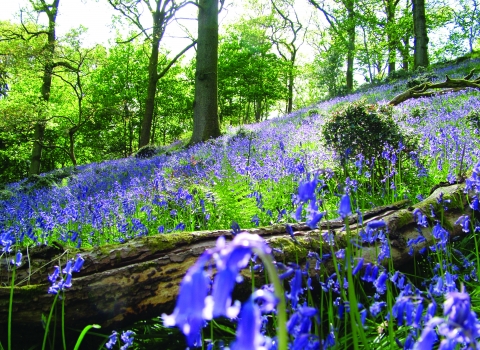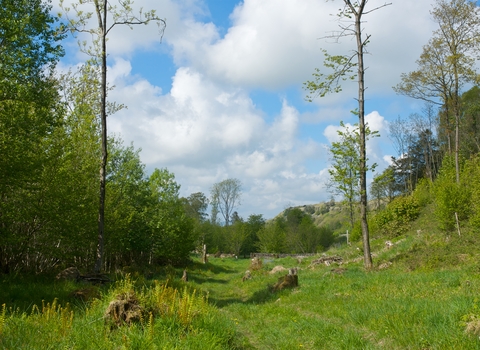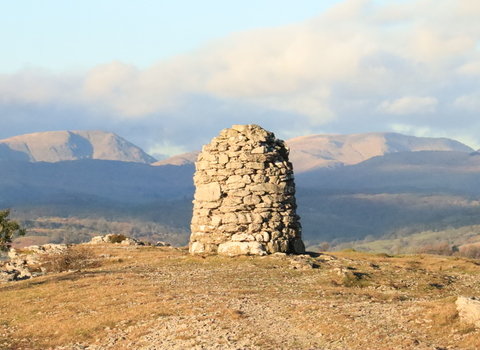We’ll be making repairs to footpaths and boardwalks, and installing a new footbridge in December 2025, however the nature reserve will remain open to visitors. Keep a look out for the new orientation and information panels that are getting installed this summer too.
There is a road closure in place until April 2027 near Staveley Woodlands Nature Reserve; access to the reserve is still available from the Craggy wood gate at SD477984 what3words///probing.discrepancy.manly and across the road at what3words///curly.window.perfumes for the rest of the nature reserve.
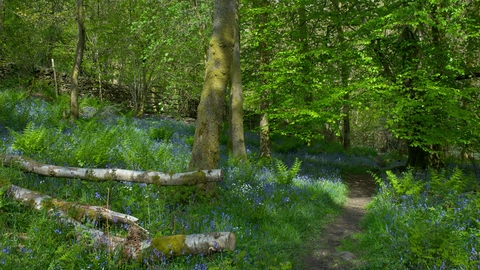
Dorothy Farrer's Spring Wood © John Morrison
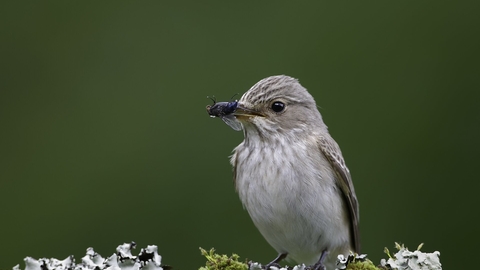
Spotted Flycatcher, perched on lichen branch with fly in beak © Richard Steel/2020VISION
Herb paris © Andrew Walter
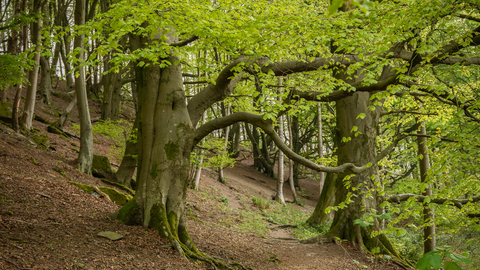
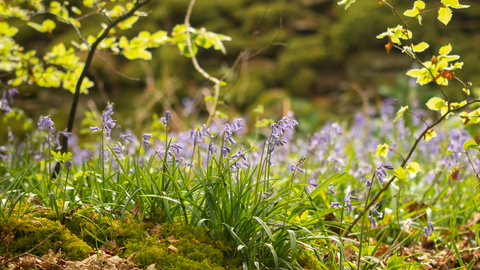
Craggy Wood ground flora © Amy Bateman
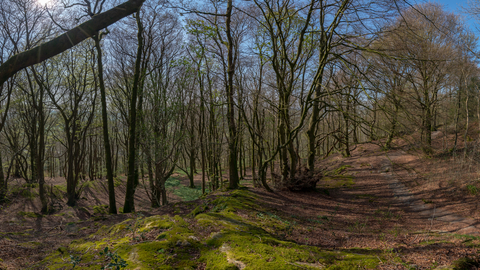
Craggy Wood trees and path © Amy Bateman
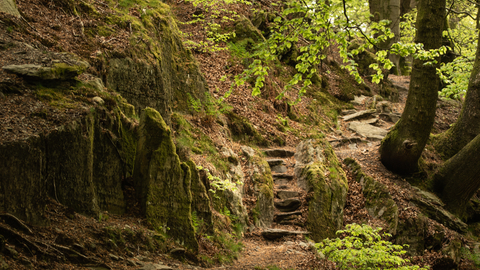
A steep path through Craggy Wood © Amy Bateman
Staveley Woodlands
Bluebells and wild garlic carpet the wood in the spring and both pied and spotted flycatchers and redstarts are seen.
Location
OS Map Reference
1:50,000. sheet no. 97Craggy Wood:
Grid reference: SD 477 984
what3words ///notice.workflow.kitchen
Dorothy Farrer's (100m to entrance):
Grid reference: SD 480 983
what3words ///guarding.allowable.fewest
Getting here
By car:
From Staveley take the road signed for Kentmere. At the Kentmere Paper Factory turn right over the bridge signed for Burneside. Follow the road for 1km/0.6 miles. Park in the layby for Dorothy Farrer's and follow the footpath to the reserve entrance.
For Craggy Wood, turn left at the fork and park in the layby on the bend in the road.
There is limited parking for both woods and we suggest parking in the village and following the footpaths across the river to visit the nature reserve.
By bicycle:
The nature reserve is 1.6km/1 mile from National Route 6 London to Keswick.
View on What3Words
Know before you go
Dogs
When to visit
Opening times
Open all yearBest time to visit
All year roundAbout the reserve
Temperate rainforest
These woodlands are part of the Lake District's remaining fragments of
Community woodlands
A number of woodlands come together to form Staveley Woodlands Nature Reserve. The most recent, Craggy Wood, was bought in partnership with the local community in 2020.
Local people have once again come to Craggy's rescue by growing native saplings to replace diseased larch trees, and plans are underway to link Dorothy Farrer's Spring Wood to Craggy Wood via a newly-planted woodland corridor.
Wildlife highlights
- An abundance of vibrant bluebells, with early-purple orchid, herb-paris and the distinctive scent of wild garlic completing the scene
- Birdwatchers will appreciate visits in spring and early summer when pied and spotted flycatchers, redstart, willow warbler, blackcap, great spotted woodpecker, nuthatch and treecreeper may be seen and heard
- The woodlands are rich in mosses, ferns and liverworts, particularly in areas of High Wood.
- Craggy Wood is a mixed broadleaf woodland perched high above the village of Staveley. Beech dominates the southern part and a number of impressive mature trees occupy its steep slopes.
- The northern end is more natural woodland comprising oak, birch and alder.
What makes Staveley Woodlands so special?
Coppicing ceased in the 1940s but was resumed by the Trust in 1989. Thanks to deer exclusion, the coppice re-growth has been excellent and the nature reserve is alive with birds and brimming with bluebells, violets and foxgloves.
Woodland history
The woodlands have always been at the heart of the village and were historically coppiced to produce bobbins, swill baskets and charcoal.
Signs of this past industry are best seen at Dorothy Farrer's Spring Wood in the pitsteads (level platforms on which charcoal kilns were built) around the woodland.
The nature reserve is made up of four areas of oak woodland: High Wood, Dorothy Farrer’s Spring Wood, Beddard’s Wood and Craggy Wood.
Recent history
Dorothy Farrer's Spring Wood was given to the Trust in 1969 by the Nicholson family. High Wood was purchased by the Trust in 1994 with the help of Trust members.
Beddard's Wood was given to the Trust in 2000 by Mrs Anne Beddard. Craggy Wood was purchased with help from the local community and Trust members and supporters in 2020. The land linking the two main areas is leased from a local landowner.
Species
Habitat
Contact us
Environmental designation
Help Staveley Woodlands thrive
Upcoming events at Staveley Woodlands Nature Reserve
If there are any upcoming events at Staveley Woodlands Nature Reserve we'll show them to you below.
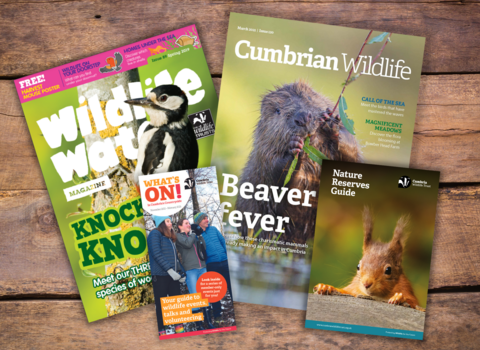
Support our conservation work on this nature reserve,
and protect Cumbria's wildlife & wild places.

